Overview
The Nippon Foundation-GEBCO Seabed 2030 Project is a collaborative project between The Nippon Foundation and the General Bathymetric Chart of the Oceans (GEBCO), Seabed 2030 seeks to inspire the complete mapping of the world’s ocean by 2030, and to compile all the data into the freely available GEBCO Ocean Map. Seabed 2030 is formally endorsed as a Decade Action of the UN Ocean Decade. GEBCO is a joint programme of the International Hydrographic Organization (IHO) and the Intergovernmental Oceanographic Commission (IOC), and is the only organisation with a mandate to map the entire ocean floor. Launched at the United Nations Ocean Conference in 2017, the project coordinates and oversees the sourcing and compilation of bathymetric data through its five data centres into the freely-available GEBCO Grid, to produce the definitive map of the world ocean floor. Learn more, here.
Getting to know the ocean is the greatest mapping adventure of our times.
Many underwater mountain ranges, volcanoes, canyons have yet to be
discovered and named.
How to Participate as a DISCOVERY Yacht
Privately-owned vessels can participate in increasing our knowledge of the ocean by sharing depth measurements from navigation instruments while out at sea. Yachts explore the world’s oceans, often in areas where data is sparse, non-existent or of poor quality. These are exactly the places where contribution of global seafloor mapping efforts can have the greatest impact.

Data Impact
Crowdsourced bathymetry (CSB) is the collection of depth measurements from vessels, using standard navigation instruments, while engaged in routine maritime operations. CSB can be used to supplement the more rigorous and scientific bathymetric coverage done by hydrographic offices, industry, and researchers around the world.
This information can help identify uncharted features such as seamounts and canyons, verify charted information and help fill the spaces on charts where no data exists. Routinely measured parameters such as under keel depth and position can then be stored, uploaded, and contributed to local and global mapping initiatives. These contributions can also benefit navigational safety, detect unknown hazards, and aid other mariners and ocean scientists. Learn more, here.

Image courtesy of Nippon

Image courtesy of NOAA

Image courtesy of Rob Beaman
Results
Further information about collecting or contributing data can be found at the IHO DCDB website (ngdc.noaa.gov/iho/), via the IHO B12 Guidance on CSB document (iho.int/en/bathymetric-publications) or by contacting representatives of the IHO CSB Working Group at [email protected].
Partnership
Seabed 2030 is a collaborative project between The Nippon Foundation and GEBCO. GEBCO is a joint program of the International Hydrographic Organization (IHO) and the Intergovernmental Oceanographic Commission (IOC) and is the only organization with a mandate to map the entire ocean floor.
The IHO’s Data Center accepts CSB data contributions through organizations, companies or universities that serve as data aggregators and/or liaisons between mariners and the DCDB. Visit seabed2030.org or https://iho.int/en/communication-material to learn more about the Nippon Foundation-GEBCO Seabed 2030 project, which aims to bring together all available Bathymetric data to produce the definitive map of the world ocean floor by 2030.
Research Project Application
Are you looking to apply for a research project? The International SeaKeepers Society has been involved in assisting significant marine research and ocean conservation efforts through the DISCOVERY Yacht Program since 2014. We are seeking dedicated researchers to provide free vessel support to gather and conduct fieldwork. For each expedition, a scientist is paired with a vessel that can meet the research expedition’s needs, including location, itinerary, and vessel specifications as outlined in the research proposal. To submit a proposal on your next expedition needs, complete the application below.

